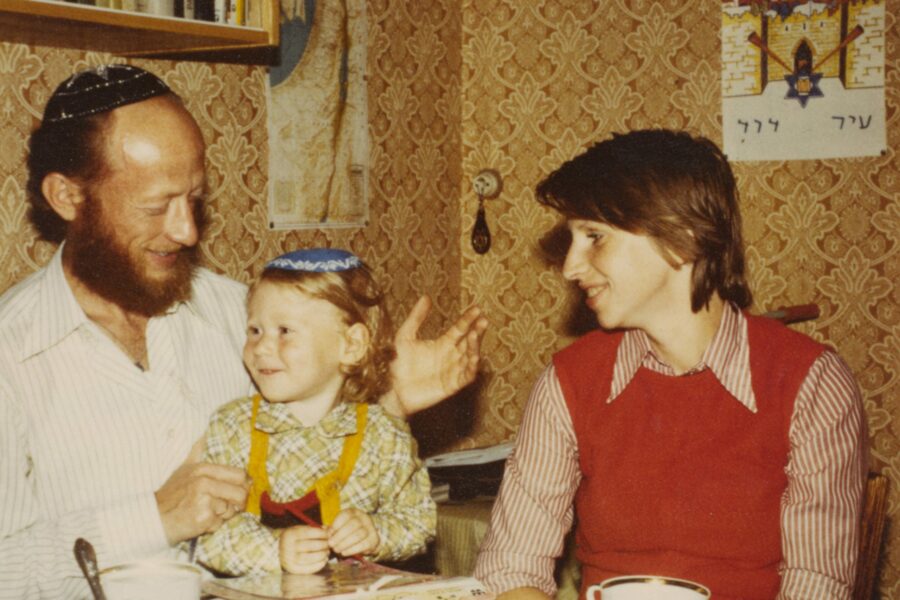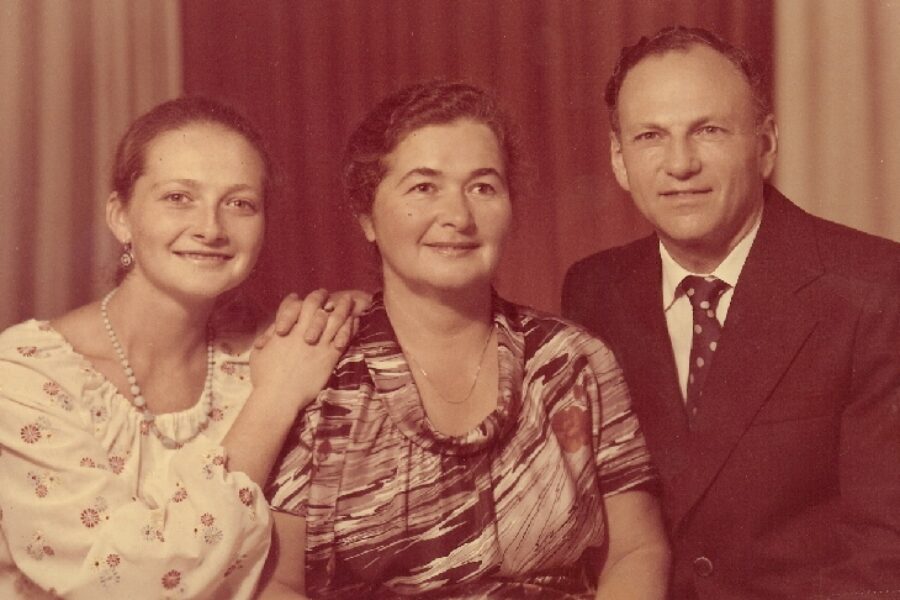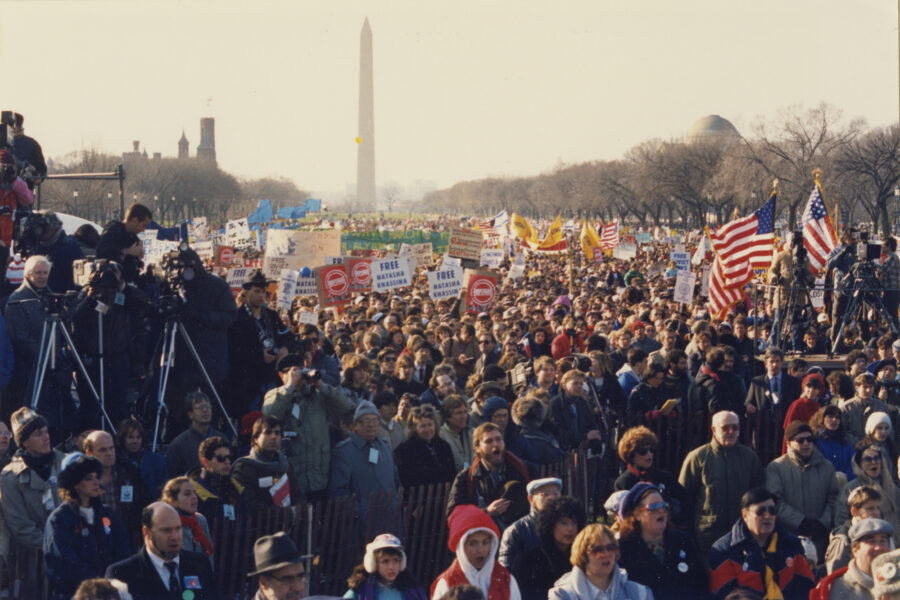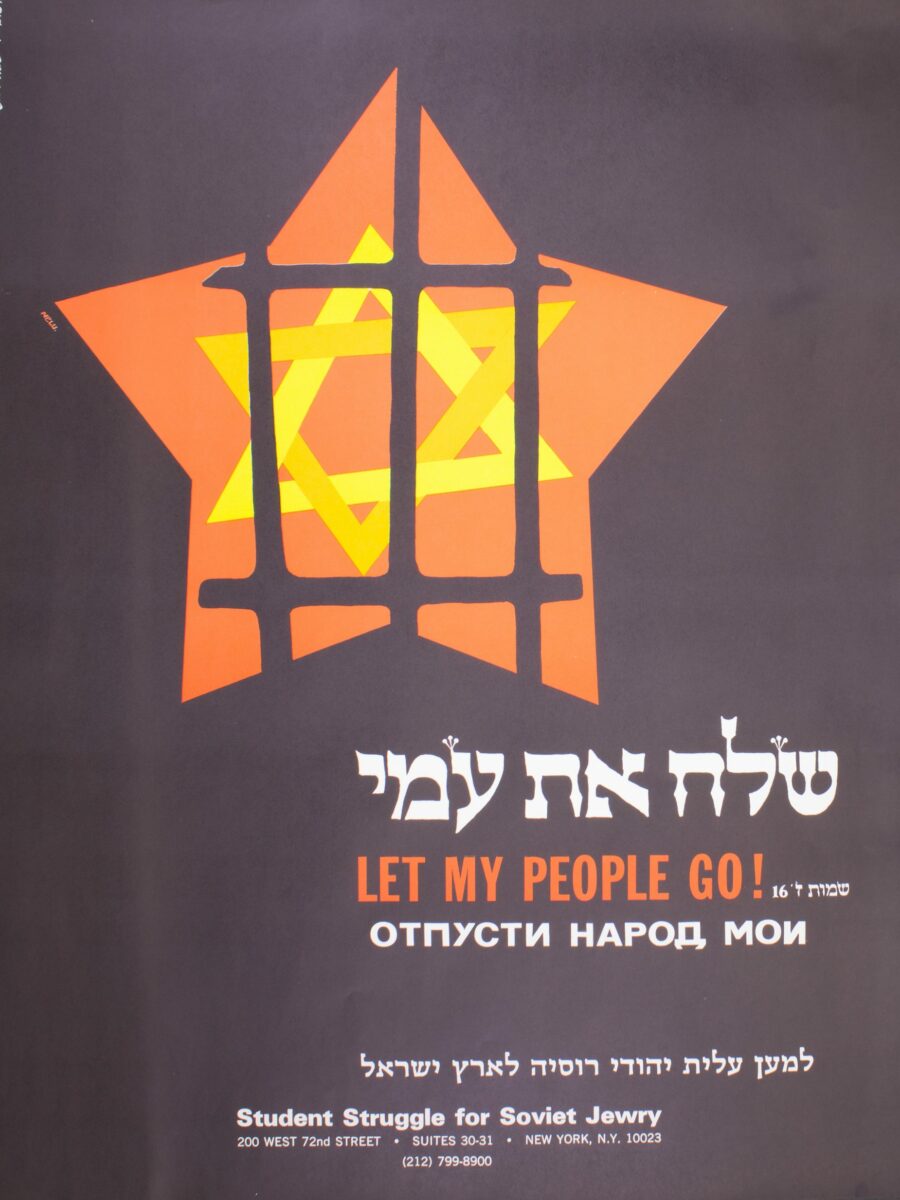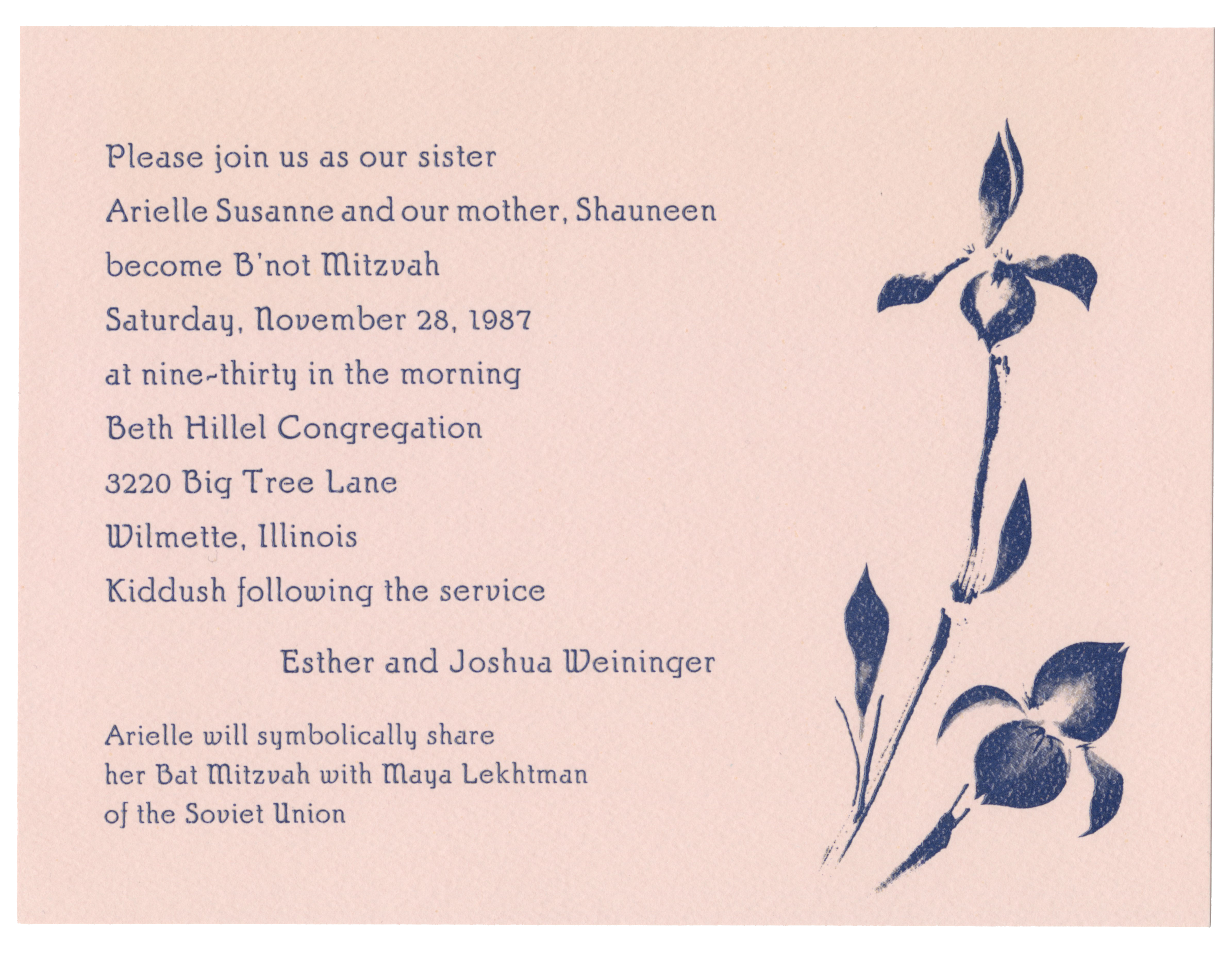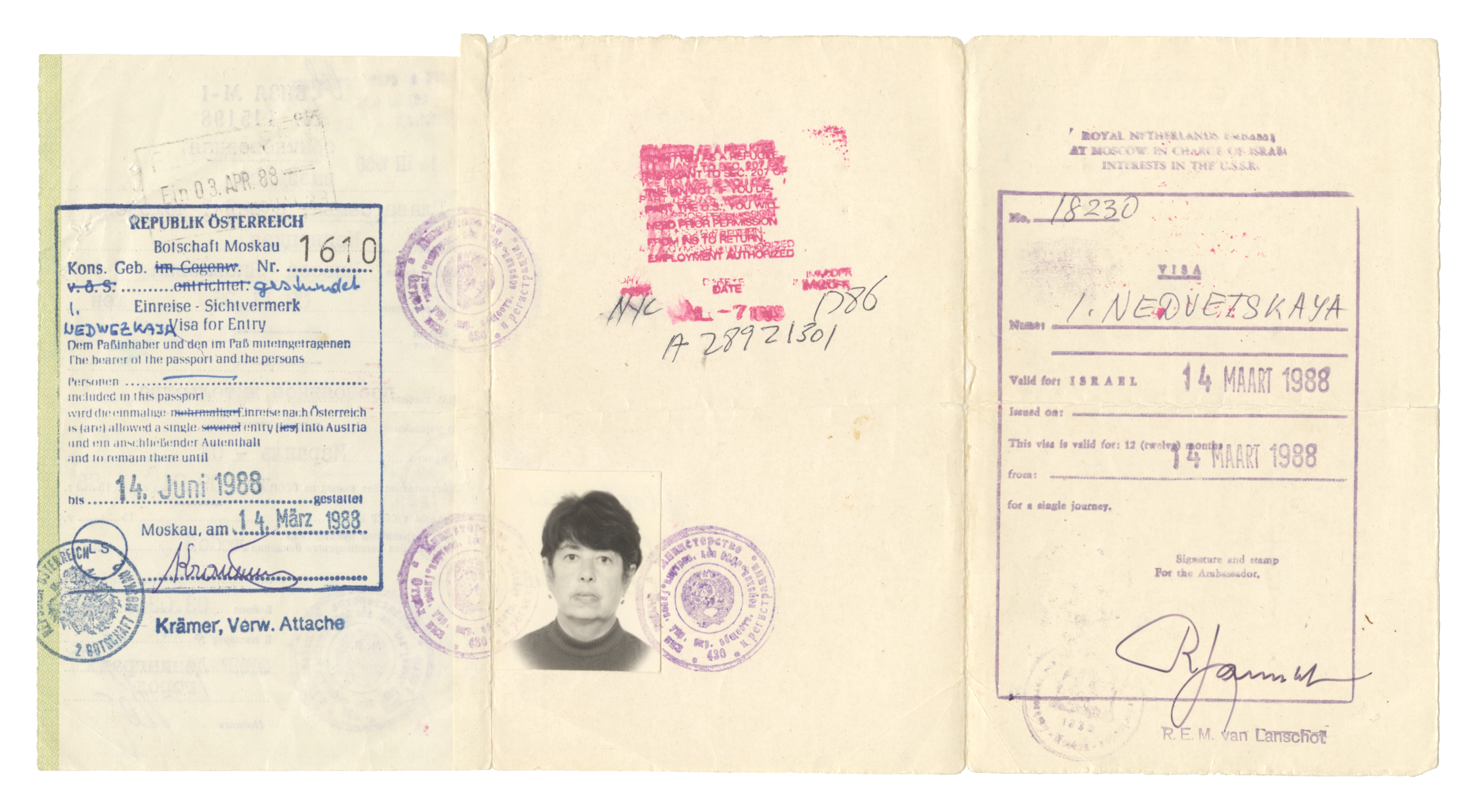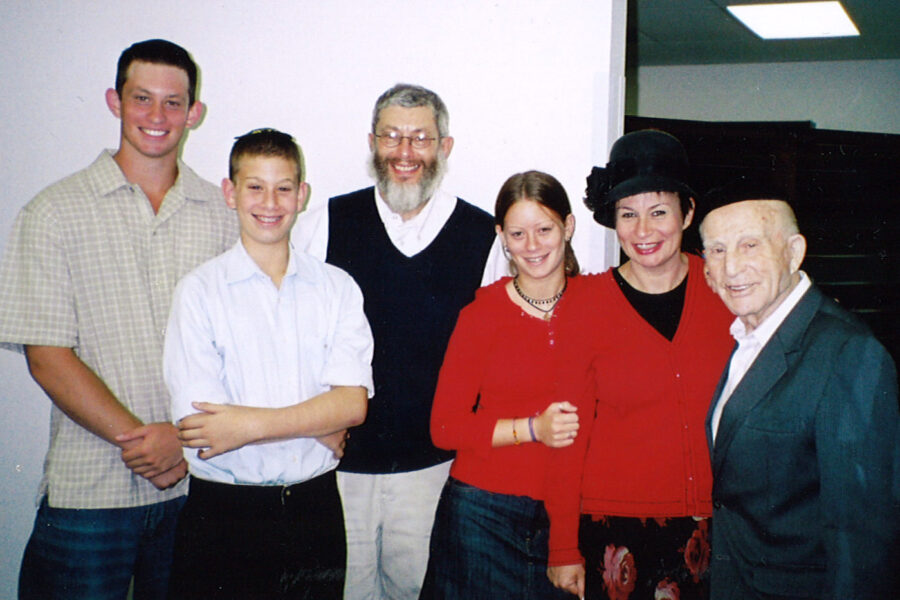IHMEC: courtesy of the Mednick family.
Soviet Jewry After the Holocaust
The trauma of the Holocaust was compounded by a government that did not recognize the specific targeting of Jews...
…but rather incorporated them as part of the over 27 million Soviet victims of the “Great Patriotic War”. Even after the Holocaust, Soviet Jewry was the third largest Jewish community after the U.S. and Israel. Stalin took advantage of long-standing antisemitism and crushed what remained of Jewish life. Synagogues were shuttered and Yiddish writers and actors executed. The Soviets believed that within a generation or two the total assimilation of Jewry would be complete, but the 1967 Six Day War between Israel and Arab states aroused Jewish consciousness, especially among the youth.
Soviet Jews were not allowed to emigrate in large numbers until 1971, but by the end of the decade over 250,000 Jews had left. Applying to leave could mean loss of employment, dismissal from university, house searches, arrest, and even imprisonment. These “Refuseniks” often faced harsh treatment, and emigration was severely curtailed during most of the 1980s.
Internal Jewish activism and international support led to an easing of emigration restrictions beginning in 1988. That and the exposure of other human rights abuses by the Soviet government were contributing factors to the fall of the Soviet Union in 1991. By 2007, 1.6 million people, mostly Jews, had left the Former Soviet Union.
Matus Stolov’s diploma
Matus Stolov’s diploma as Engineer of Thermal Energy from the J. V. Stalin Memorial Belorussian Polytechnic Institute, Minsk, U.S.S.R., June 23, 1951.
Matus submitted his application for emigration in 1980, and it was approved two years later. The Stolov family immigrated to Chicago on April 6, 1982, and for the first time in their lives were able to celebrate Passover.
The mass exodus of Jews from the Soviet Union was a formative event in modern Jewish history and the universal struggle for human rights.
In the United States, Chicago Action for Soviet Jewry (part of the Union of Councils for Soviet Jews), the National Conference on Soviet Jewry, Jewish Community Relations Councils, and the Student Struggle for Soviet Jewry advocated for decades for the emigration rights of Soviet Jews.
Once those rights were realized, Jewish Federations launched massive national fundraising and resettlement efforts. Known as Operation Exodus, those campaigns helped Soviet Jewish immigrants reconnect with Jewish learning long denied to them by the U.S.S.R., find housing, food, and medical services. They also provided transitional assistance such as job counseling and English language instruction.
More than one million immigrants were welcomed in Israel. Of the 300,000 immigrants who came to the U.S., 30,000 arrived in the Chicago area where Jewish United Fund and a host of volunteers assisted in their resettlement.
Photo courtesy of the American Jewish Historical Society.
Let My People Go!
Let My People Go! poster produced by the Student Struggle for Soviet Jewry (SSSJ), New York, NY, 1970.
SSSJ was founded in 1964 by Jacob Birnbaum and was a pioneer in the movement to oppose the persecution of Jews in the Soviet Union. Birnbaum believed a grassroots organization of college students who came of age during the Civil Rights Movement were more likely than their elders to engage in open protest and civil disobedience.
SSSJ viewed its mission in a historic context and invoked biblical imagery and language to dramatize its goals. Its mantra “Let my People Go” drew a direct connection between its campaign and the biblical Exodus from Egypt.
“Remember, 40 years ago you were silent. So, speak about us and for us.”
– Lev Utevsky,”Refusenik”
Before The Doors Close
Before The Doors Close…A Guide Book for Soviet Jewry Chairmen by Susan Mednick for Chicago Action for Soviet Jewry, Highland Park, Illinois, 1979.
The Chicago Action for Soviet Jewry organization was founded in 1974 by Marilyn Tallman and Pamela Cohen. It communicated with “Refusenik” families, wrote letters to Soviet officials, prepared for travel to and visitation with “Refuseniks,” and lobbied U.S. authorities.
The booklet included writings of a former “Refusenik”:
“ You may take out 90 rubles per person….
A diamond of not more than one carat….
Usually nothing is left to start your new life….
But as we rolled closer and closer to Austria,
to Vienna, that was such happiness.”
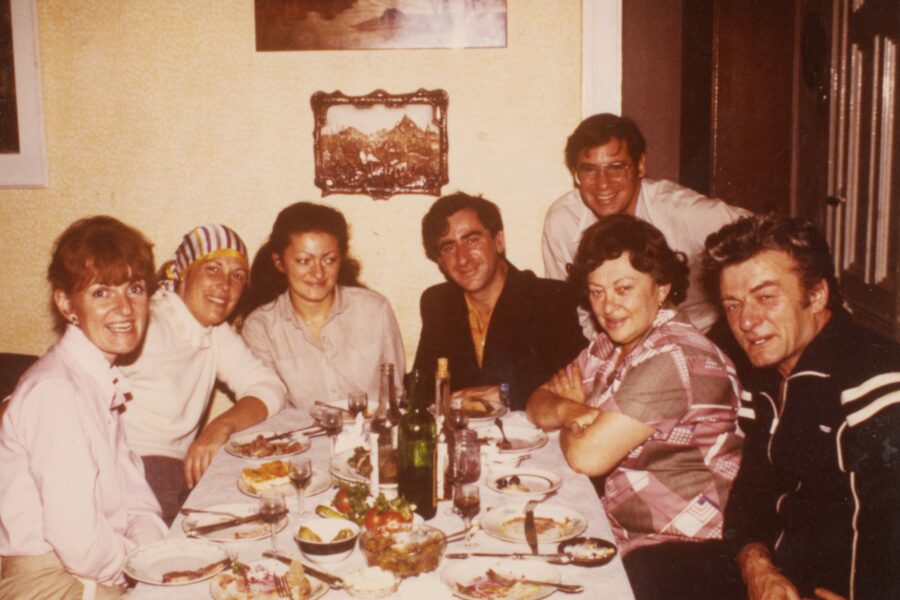
IHMEC: courtesy of the Mednick family.
Chicagoans, Mednicks, and Jangers
Chicagoans Susan and Robert Mednick and Lois and Richard Janger traveled to the Soviet Union to bring hope and supplies to “Refuseniks”. They spent three days with the Maryasen family.
The Maryasens were a vital component of the Riga community, a key activist center of Soviet Jewry. Alexander had been the head of an industrial plant until his application to leave the U.S.S.R. In the wake of his dismissal, he spent time researching Holocaust-era sites around Riga. The Mednicks recalled that even after years of refusals and disappointments, Alexander still somehow found the ability to laugh. The Maryasens immigrated to Toronto, Canada.
B’not Mitzvah invitation
B’not Mitzvah invitation for Arielle and Shauneen Weininger, Wilmette, Illinois, 1987.
Arielle was “twinned” with Maya Lekhtman, a 13-year-old Jewish girl in the Soviet Union who was prohibited from celebrating her Bat Mitzvah. Organizations that worked to free Soviet Jewry paired young American Jews with youngsters in the U.S.S.R.
After the Torah reading, it was typical that the story of Maya and other Jewish “Refuseniks” would be explained by the Bat or Bar Mitzvah child to congregants to raise awareness and increase activism.
Russian passport
Russian passport issued to Inda Arber, U.S.S.R., 1989.
While Inda Arber survived by being evacuated to Siberia, twelve members of her family, including her parents and brother, were victims of a mass killing in their hometown of Dunaevtsi. After the war, Inda lived in Odessa with her husband and two sons until they immigrated to Chicago in 1989.
Soviet exit visa
Soviet exit visa issued to Inessa Nedvetskaya (née Khariton) for emigration to Israel, March 1988.
Beginning in 1988, Jews left the Soviet Union in ever-increasing numbers, and by the end of the 1990s, some one million Soviet Jews had emigrated to Israel, half a million to the U.S., and several hundred thousand to other countries.


